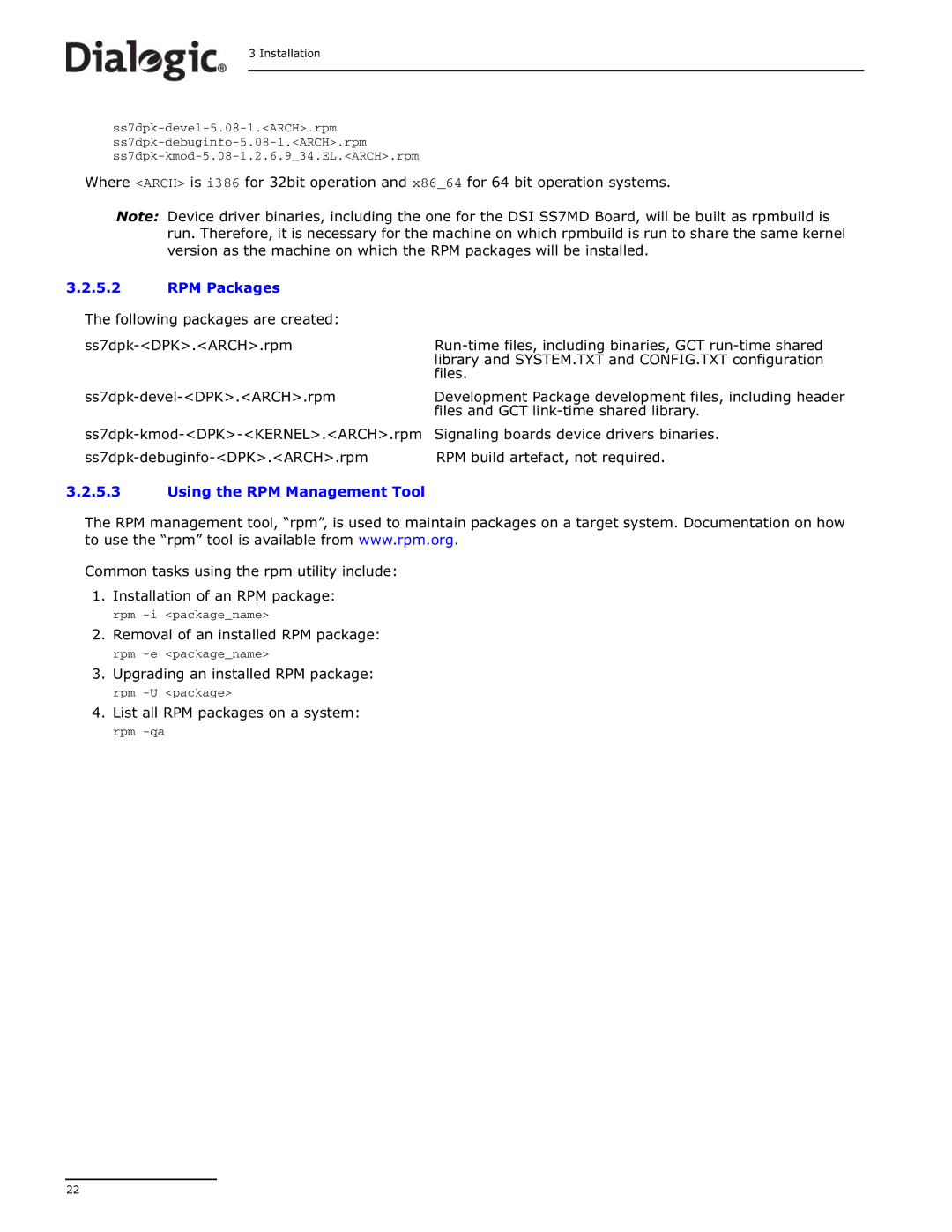
3 Installation
Where <ARCH> is i386 for 32bit operation and x86_64 for 64 bit operation systems.
Note: Device driver binaries, including the one for the DSI SS7MD Board, will be built as rpmbuild is run. Therefore, it is necessary for the machine on which rpmbuild is run to share the same kernel version as the machine on which the RPM packages will be installed.
3.2.5.2 | RPM Packages |
|
The following packages are created: |
| |
|
| library and SYSTEM.TXT and CONFIG.TXT configuration |
|
| files. |
Development Package development files, including header | ||
|
| files and GCT |
Signaling boards device drivers binaries. | ||
RPM build artefact, not required. | ||
3.2.5.3Using the RPM Management Tool
The RPM management tool, “rpm”, is used to maintain packages on a target system. Documentation on how to use the “rpm” tool is available from www.rpm.org.
Common tasks using the rpm utility include:
1.Installation of an RPM package: rpm
2.Removal of an installed RPM package: rpm
3.Upgrading an installed RPM package: rpm
4.List all RPM packages on a system: rpm
22
